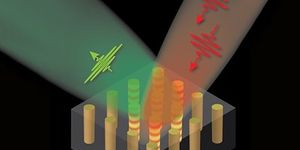According to NASA, Saturn's Rings Are Disappearing
Only a handful of worlds in the solar system sport planetary rings, but Saturn’s are the most robust. You’ve unquestionably seen Saturn’s planetary rings depicted in textbook solar system illustrations and in the photos captured up close and personal by the Cassini spacecraft before it plummeted into Saturn’s atmosphere. Despite all of this, we still know so little about them.

Image Credit:
Astronomers have long been captivated by Saturn’s planetary rings, so it shouldn’t come as much of a surprise that we’re still studying them to this very day. On the other hand, new NASA-led research indicates that Saturn’s planetary rings won’t be around for long – in fact, they could be disappearing at an alarming rate.
The research, published recently in the journal Icarus, denotes how ultraviolet light from the Sun and plasma clouds from micrometeoroid strikes charge the icy dust found in Saturn’s rings. Consequently, the charged material gets picked up by Saturn’s magnetic field and later tugged into the atmosphere by way of the planet’s immense gravitational pull.
"We estimate that this 'ring rain' drains an amount of water products that could fill an Olympic-sized swimming pool from Saturn's rings in half an hour," explained James O'Donoghue of NASA's Goddard Space Flight Center in Greenbelt, Maryland.
"From this alone, the entire ring system will be gone in 300 million years, but add to this the Cassini-spacecraft measured ring-material detected falling into Saturn's equator, and the rings have less than 100 million years to live."
Related: Do we finally know how old Saturn's planetary rings are?
Saturn is thought to be about 4 billion years old, and one of the most pressing questions to riddle astronomers all these years is whether Saturn sported rings when it formed, or the planet formed them later in life. The new research supports the latter notion, proposing that Saturn’s rings formed less than 100 million years ago. Still, their origin remains a mystery.
The idea that Saturn’s rings had been dissipating by way of ‘ring rain’ isn’t new; NASA’s twin Voyager probes hinted at some of the first evidence decades ago, and the findings were published in the journal Geophysical Research Letters in 1986. But new observations made with infrared-sensitive instruments on the Keck telescope in Hawaii recently reinforced the idea.
What the astronomers observed were glowing bands in both Saturn’s Northern and Southern hemispheres, which represented the charged particles that were being swept into Saturn’s atmosphere via the magnetic field. The amount of ‘ring rain’ they saw matched what was observed by the twin Voyager spacecraft many years ago.
While the new research certainly appears to validate the ‘ring rain’ idea, follow-up studies could shed light on whether the changing of Saturn’s seasons impacts the activity. Either way, one thing remains clear: Saturn won’t have those robust rings forever.








